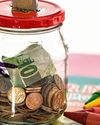
'Stagflation' is an ugly word for an ugly situation-the unpleasant combination of economic stagnation and inflation.
The last time the world experienced it was the early 1970s when oil-exporting countries in the Middle East cut supplies to the United States and other supporters of Israel. The 'supply shock' of a four-fold increase in the cost of oil drove up many prices and dampened economic activity globally.
Stagflation was thought to have been left behind-but now there is a real risk of it coming back, according to the latest annual economic report of the Bank for International Settlements (BIS), which warns that "we may be reaching a tipping point, beyond which an inflationary psychology spreads and becomes entrenched."
By "inflationary psychology" the BIS means that expectations of higher prices lead consumers to spend now rather than later, on the assumption that waiting will cost more. This increases demand, pushing up prices; thus expectations of inflation become a self-fulfilling prophecy. The danger of stagflation comes from this inflationary cycle becoming so entrenched that attempts to curb it through higher interest rates push economies into recession.
What's driving inflation?
As well as its own expert staff, the BIS brings together expertise from its 63 member central banks, which includes the those from major economies such as the US Federal Reserve, the European Central Bank, and the Bank of England. The 3 African member banks are the central banks of Algeria, Morocco, and the South African Reserve Bank.
This story is from the August 2022 edition of Personal Finance.
Start your 7-day Magzter GOLD free trial to access thousands of curated premium stories, and 9,000+ magazines and newspapers.
Already a subscriber ? Sign In
This story is from the August 2022 edition of Personal Finance.
Start your 7-day Magzter GOLD free trial to access thousands of curated premium stories, and 9,000+ magazines and newspapers.
Already a subscriber? Sign In

'Hack' your money psychology
Spending too much money? Tempted by sales? These money psychology hacks’ can help

Accounting tips for small businesses
It's important to properly manage your business finances

KIDS AND MONEY: FIVE WAYS TO START THE CONVERSATION
WHEN IT comes to teaching young children about the world, parents may feel that some topics—like politics and religion—are too tough to broach.

REDUCE THE PAIN OF DOWNSCALING
Investing in a holiday home as a retiree

THE RISKS INVOLVED IN INVESTING
Finding the balance between eating well and sleeping well

TESLA: WHY IT MIGHT BE TIME FOR MUSK TO GO
What 2023 holds for the electric vehicle company

FINDING SOMEONE TO STEP INTO YOUR SHOES
The Eskom crisis demonstrates again the importance of proper succession planning—loDSA

BORROWING MONEY ISN' ALWAYS A BAD THING
On the contrary, debt can be a sensible way to build wealth

WILL SOLAR POWER INCREASE THE VALUE OF YOUR HOME?
The upfront investment is high, which you'll want to recover when you sell

WHERE NEXT FOR THE GLOBAL ECONOMY?
Why central banks face an epic battle against inflation in 2023